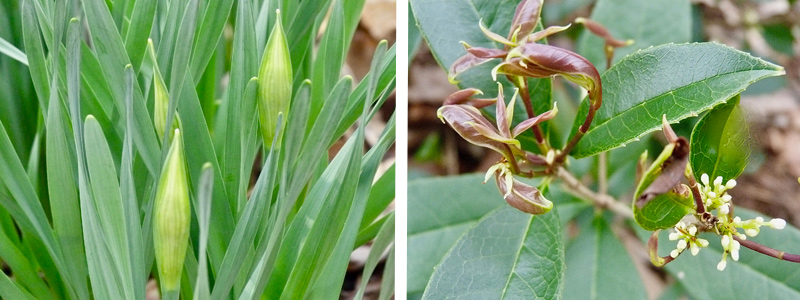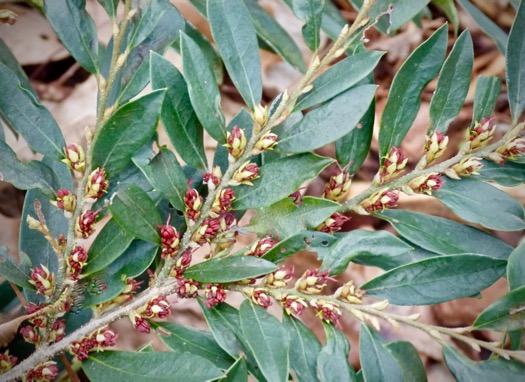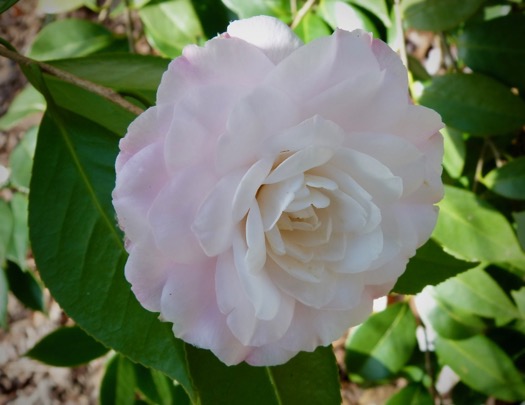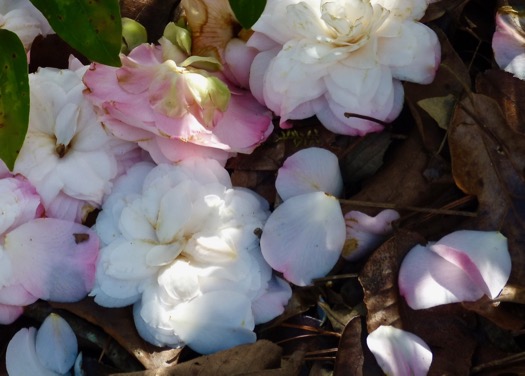Camellia 'Red Candles' Exceeds My Expectations
 Sunday, February 3, 2019 at 8:00PM
Sunday, February 3, 2019 at 8:00PM The "snow event" that local weathermen forecasted last week did not materialize, but we did experience very cold rain and temps that fell well below freezing for several nights in a row. I imagined that any open camellia flowers would turn to brown mush, though tightly closed buds would survive. I went out to inspect after the weather warmed up and the sun came out. Yep, most blooms were brown mush. The exception was Camellia japonica 'Red Candles,' also sold as 'Crimson Candles.' It has been blooming for a month and the freezing temps did not faze it: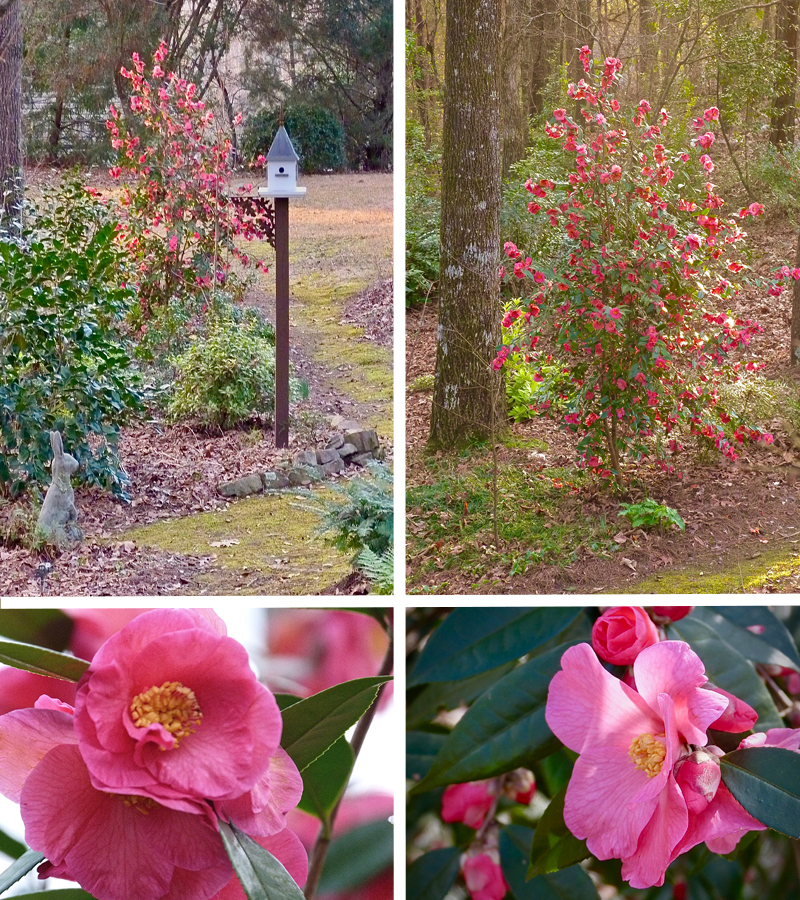
Since I planted it eight years ago, this shrub has never disappointed me. Its abundant, rose-pink blooms are a beacon in the winter woodland garden. 'Red Candles' has bronze-red new foliage, which turns a deep green. The shrub has matured to about 9 by 5 feet and makes an attractive statement year-round.
Whenever I put in a new plant, I am usually optimistic. I do my research and try to put the right plant in the right place. Nevertheless, some plants die dramatically or else limp along till I put them out of their misery. Others succeed for a while, then eventually decline. Many are understated, doing their job but nothing more. Some do well; yet pleased as I am, I eventually take them for granted. But a few, like 'Red Candles,' are outstanding, each year bringing me new joy and wonder.
Planting and Caring for Camellias:
'Red Candles' will grow in USDA hardiness zones 7a-9b. A few camellias are hardy in zone 6. All grow best in well drained, acid soil under the canopy of deep rooted trees that allow sun to filter through. I dig wide holes for mine and add compost to the native soil before backfilling around the root balls. To encourage good drainage it is important to plant all camellias high, with their trunk bases above the soil line. I water well and then add mulch around the bases to protect the roots. Keep the soil moist but not soggy. To promote good health, keep spent blooms and fallen leaves cleaned from under the shrub. Camellias don't usually need a lot of fertilizer. Wait until blooming has finished in early spring to fertilize with an organic fertilizer for acid-loving plants.


